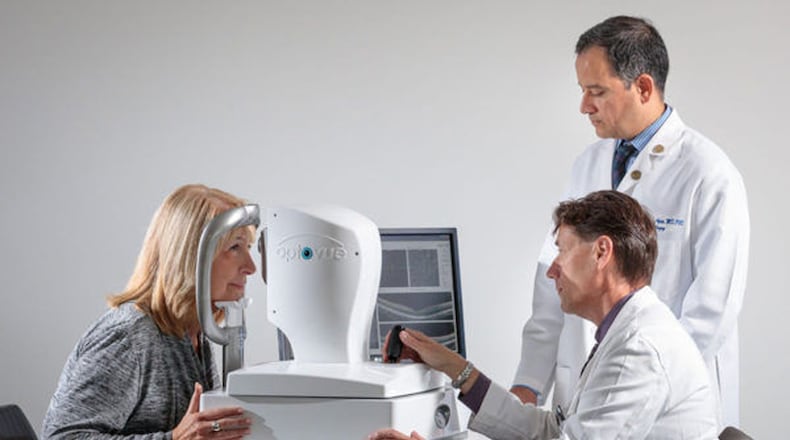Scientists estimate that Alzheimer’s-related plaques begin accumulating in the brain two decades before the onset of symptoms. Physicians can use PET scans and lumbar punctures to detect the plaques, but the tests are expensive and invasive.
Researchers have been looking for ways to detect the disease sooner and test drugs to intervene.
“We know the pathology of Alzheimer’s disease starts to develop years before symptoms appear,” said co-principal investigator Dr. Gregory Van Stavern, “but if we could use this eye test to notice when the pathology is beginning, it may be possible one day to start treatments sooner to delay further damage.”
Longer studies involving more people are needed, but if changes detected with the eye test can be used as markers for Alzheimer’s risk, it may be possible to screen people in their 40s or 50s, Van Stavern said.
The 30 study participants had an average age in the mid 70s. None were experiencing symptoms of Alzheimer’s.
Out of the study group, 17 had PET scans or lumbar punctures that showed evidence of accumulating plaques. The eye exams of all 17 also detected retinal thinning and large areas without blood vessels in the center of their retinas.
The retinas appeared normal in patients whose PET scans and lumbar punctures were also normal.
In previous studies, researchers examining the eyes of people who had died from Alzheimer’s reported the eyes of the patients showed signs of thinning in the retina and degradation of the optic nerve.
In the new study, researchers used a technology similar to what is found in many eye doctors’ offices to measure thickness of the retina and optic nerve fibers. They added one component to the common test –angiography – which also allowed them to look at blood-flow patterns.
“In patients whose PET scans and cerebrospinal fluid showed preclinical Alzheimer’s,” Van Stavern said, “the area at the center of the retina without blood vessels was significantly larger, suggesting less blood flow.”
About the Author
